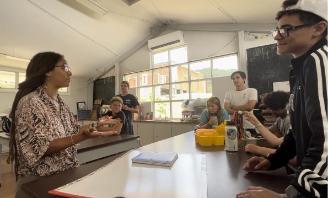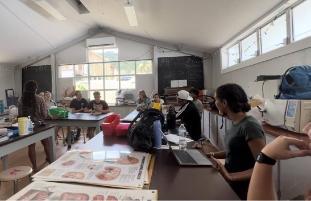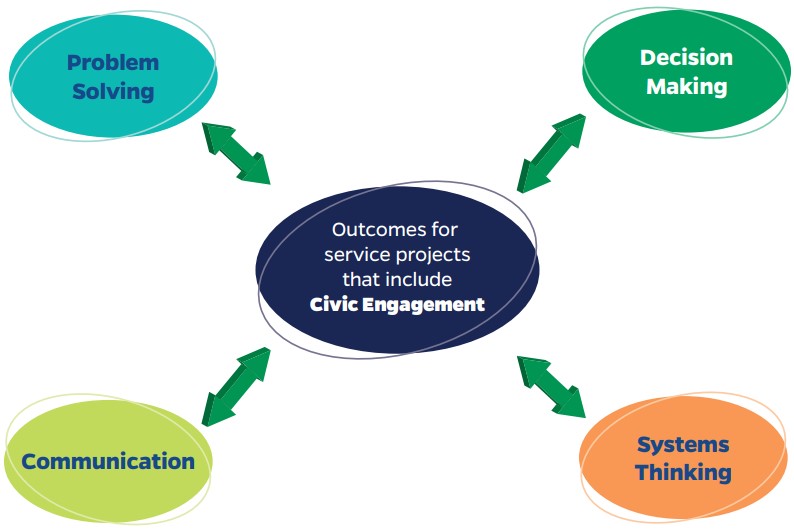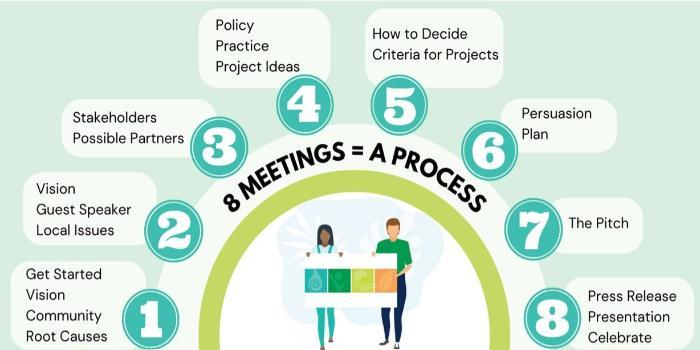Sarasota, FL
A 4-H County Council teen leadership group in Sarasota, FL asked their local extension office to plant a pollinator garden and created educational videos to teach about the importance of pollinators and how to support pollinators. Their involvement in raising livestock for their 4-H projects led them to focus on supporting pollinators, aligning with their interests and environmental concerns. Through this hands-on project, they aimed to positively impact their community through education. With the help of the CAPE program and a Florida 4-H Community Pride grant, they planted pollinator-friendly species. After researching local pollinator issues, they met with the County Extension Director to discuss developing short videos for county buildings. In consultation with a Florida Friendly Landscape Specialist, they learned about the significance of trees in supporting pollinators. They also wrote a persuasive letter to the County Extension Office to secure permission for their garden on its grounds. Lastly, they delivered educational speeches about pollination in Florida, including one presented to Florida legislators at the 4-H Day at the Capital event in Tallahassee, FL.
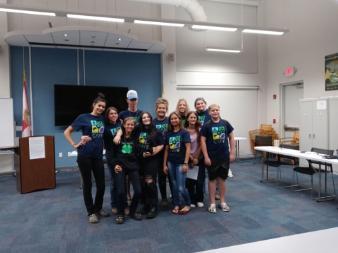

Baldwin County, AL
A group of five high school students from the Daphne High School Environmental Club, aged 16-19, from Baldwin County, Alabama, took up the mission to combat herbicide runoff into the Mobile Bay. After listening and questioning members of the Municipality of Baldwin County and a Mobile Bay conservation agent, they realized there was no regulated control in the application of herbicide for the community residents. The unregulated herbicides resulted in runoff around the cities of Daphne and Fairhope, ultimately finding their way into the Mobile Bay and negatively affecting the marine life and ecosystem. Through their conversations with their CAPE partners, the youth learned that the lack of public education on the effects of herbicide runoff is one of the main factors that contribute to this problem. To address this problem, they created an informational video using scientific data as support, tested organic herbicides, and presented their project by tabling at the Fairhope Yacht Club and speaking with the Daphne High School Media Club. They shared their video with Alabama Watershed Conservation and environmental science teachers in their school district to spread the word about the impacts of herbicide runoff.
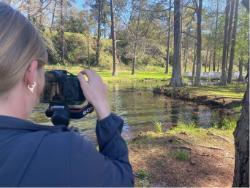
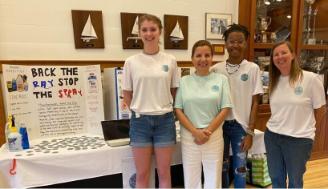
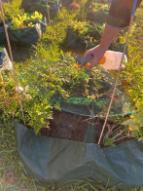
Walton County, FL
A Teen Challenge Personal And Leadership Development group, comprising individuals aged 12-18 in Walton County, FL, took on the task of enhancing local wildlife habitat by requesting that landowners install wood duck nest boxes. As they started the CAPE program, this group aspired to create a positive impact on the well-being of bird species in their community. After speaking with their Forestry and Natural Resources agent, they discovered the struggles faced by wood ducks, once near extinction but now returning to the region. They then decided to focus their efforts on a local lake that served as a habitat for numerous wood ducks and was a prominent feature in their community.
The group decided to ask landowners to build and install a wood duck box on their property to improve wood duck populations. To accomplish this, they devised a three-part project that effectively combined the CAPE process with hands-on service. First, they created an educational presentation on how to build a wood duck box and why it is important to protect the wood duck habitat and sent it to be featured on their county website. Next, they surveyed people to identify property owners who had suitable land and gauged their willingness to install a wood duck box. Lastly, they composed a letter to Duck Unlimited, seeking support for their endeavor, spreading the word about their project to locals, and sharing the survey they created.
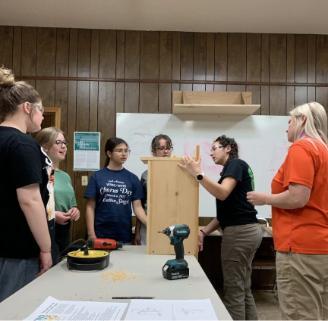
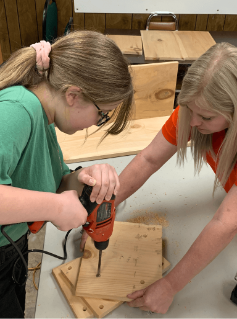
Tallahassee, FL
A 4-H group of 9 youth in Tallahassee, FL, ages 11-15, asked their local Department of Transportation and the neighborhood watch to improve safety along local bike paths. They started by identifying their neighborhood as the community they wanted to work in and explored several issues they were interested in. They ultimately decided since they had an emotional connection to the bike paths they rode on frequently, they chose to focus on this issue. To gain a better understanding of the issue, they invited an EMT to share insights on the injuries sustained by bikers and hikers on the existing trails, thereby solidifying the urgent need for improved safety measures. With their issue defined, they got to work surveying the paths. Their findings revealed several deficiencies: inadequate signage, lack of proper railings on bridges crossing creeks, and poor marking near traffic zones. With this data, they wrote persuasive letters to the local Department of Transportation and the neighborhood watch. They included mock-accident photos depicting the potential accidents and hazards that could occur on dangerous bike paths. Since speaking out about this issue, a “Child at Play” sign was made more visible around the bike paths. Additionally, a local homeschool group heard about the project and hosted a bike safety day where they issued safety equipment to the youth in the area.

Maryland
A Rotary Interact Service Club of 18 youths ages 13-18 developed a community education program on watershed pollution and presented their cause to county-based decision-makers. After exploring environmental concerns in their neighborhoods and schools over two weeks, the group agreed that watershed pollution was a prominent issue requiring attention county-wide. To strengthen their understanding of the issue, they spoke with a local environmental education non-profit, the local planning agency, and a representative from the local waste management division about watershed pollution, practices, and current county strategies for education on the topic. Armed with this knowledge, they created a community education project by preparing display boards, games, and various props to help them engage with and educate the community. They reached out to decision-makers in the county’s Waste Management and Planning Departments asking them to help inform the public about runoff and pollution in our watersheds. The pitch was so effective that representatives from both groups agreed to come to help educate the public at a community-wide Naturefest event attended by 392 families.

Alachua County, FL
Alachua County 4-H CAPE members spoke at a City Commission meeting and joined a community coalition to save four oak trees that were slated to be cut down. When they embarked on their CAPE project two years earlier, the group observed a discouraging trend in their community: Gainesville, once renowned for its abundant urban forest, was gradually losing its valuable shade trees to small crape myrtle replacements. sight. With this issue in mind, they began documenting areas that were losing trees and speaking with local tree experts to understand what exactly was happening. They learned that the municipal code regarding tree removal and replacement was being followed, but wasn’t sufficient to protect the tree canopy. The group members researched their local government codes and explored alternative interpretations which they discussed with the Tree Advisory Board and presented to the City Commissioners.
When the city decided removing the downtown oak trees was the best solution to buckled sidewalks and wheelchair access problems, the group spoke to city commissioners and others. After initially deciding to keep three trees and remove one, the community rallied to point out that the tree could be saved if the sidewalk was moved. The city commissioners eventually recanted and agreed to move the sidewalk to keep the live oak tree! With the success of saving the oak trees behind them, the group decided their next step would be to meet with the Mayor and individual city commissioners to shore up the future of tree preservation in Gainesville. In the meantime, the CAPE members have tabled and presented their project at the Alachua County Climate Fair and other local events.

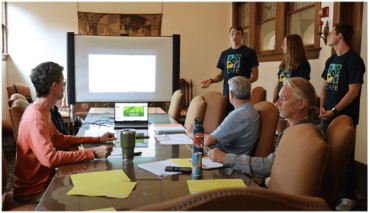
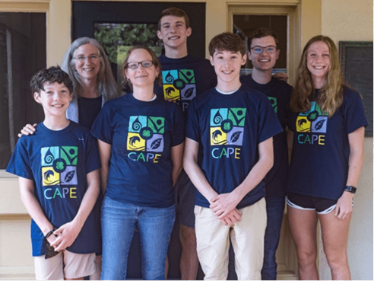
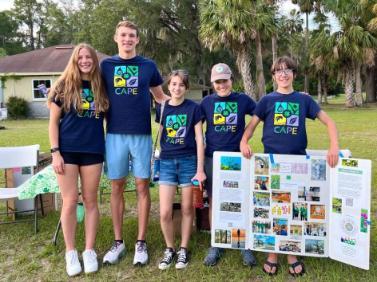
St. Croix, U.S. Virgin Islands
A Climate Action Club in St. Croix, USVI is made up of 10 passionate youths who have begun their journey working with food security in their community. Before even starting the CAPE program, they had to appeal to decision-makers at their school to allow their club to meet for a more extended period. With one success under their belt, they met with a local community organizer and decided on food security as the issue they would like to focus their project around during the next school year.
